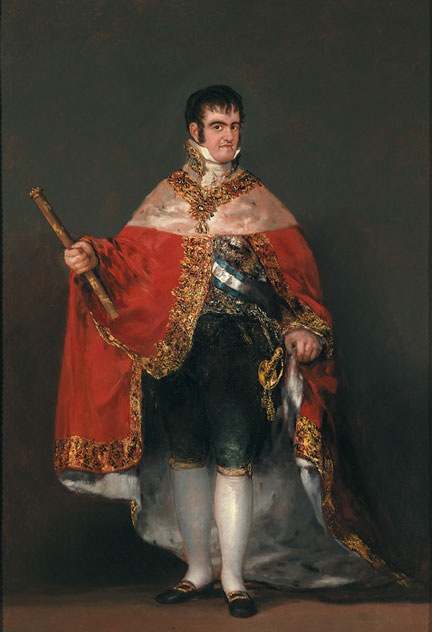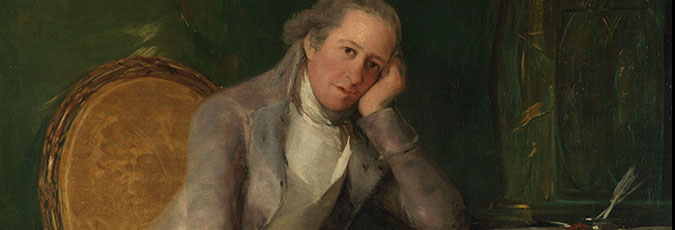Liberals and despots
‘Ferdinand VII in Court Dress’
Following Ferdinand VII’s return from exile in 1814, Goya resumed his court duties as First Court Painter. One of his principal roles was to provide the official image of the monarch, of which 'Ferdinand VII in Court Dress' is the prime version.
King Ferdinand is decked out in full royal regalia. He grips the sceptre; symbol of sovereignty wrested from his father and then handed back to Napoleon, now regained thanks to British intervention and Wellington’s expulsion of the French. Having just overthrown the constitution drawn up by the Spanish liberals in 1812, Ferdinand’s grip on absolute power is echoed in the way his left hand grasps the mantle beside the protruding handle of his sword.
Goya is unlikely to have had much respect for Ferdinand; he restored the Inquisition’s authority and arrested many of Goya’s friends and colleagues. Although it was his duty to portray the King, one wonders if Goya was subtly mocking him in this portrait. The jet-black hair frames his ill-favoured features, with bulbous nose and jutting chin. The royal attributes that adorn him almost engulf his small stature.
Goya was almost 70 when he painted this portrait, and yet his technique of blobs, dots, and drags of paint to depict details such as the brocade on the King’s robes and the golden chain of the Order of the Golden Fleece, is perhaps his most radical. Ferdinand, whose tastes were as reactionary as his politics, kept Goya in post but appointed a more traditional portraitist, Vicente López, to serve as joint First Painter to the King.

© Madrid, Museo Nacional del Prado

